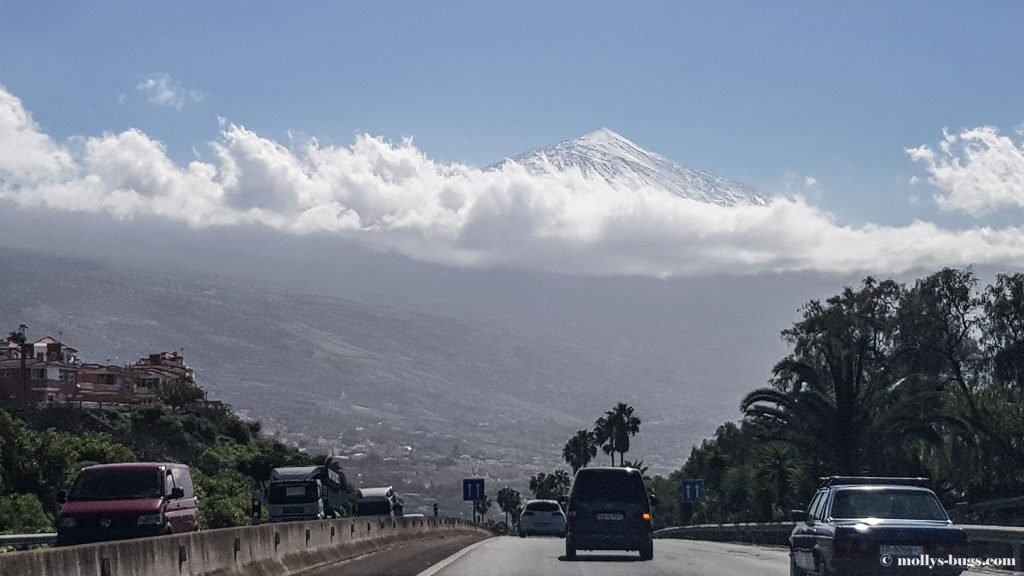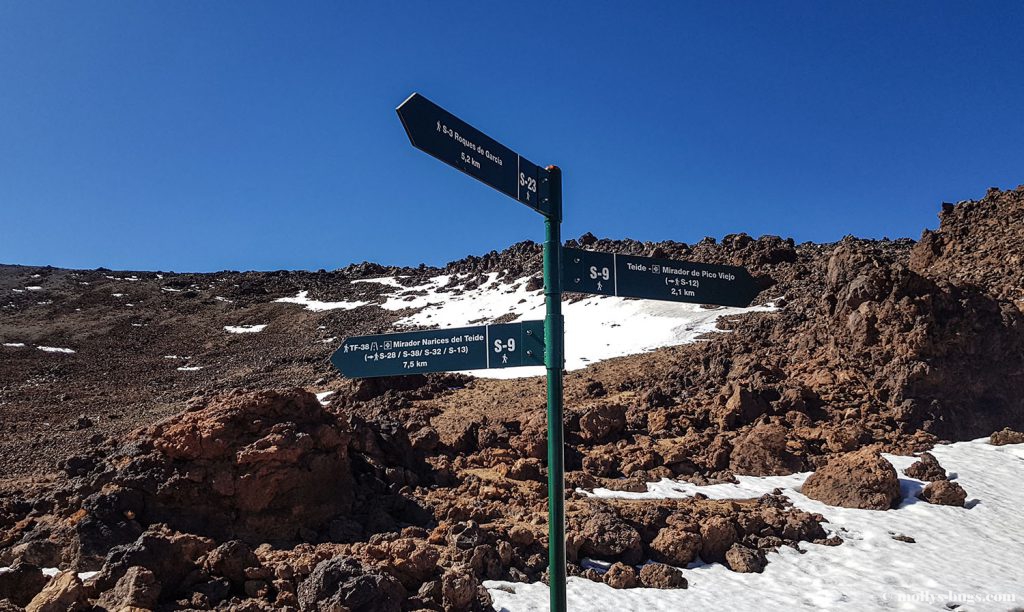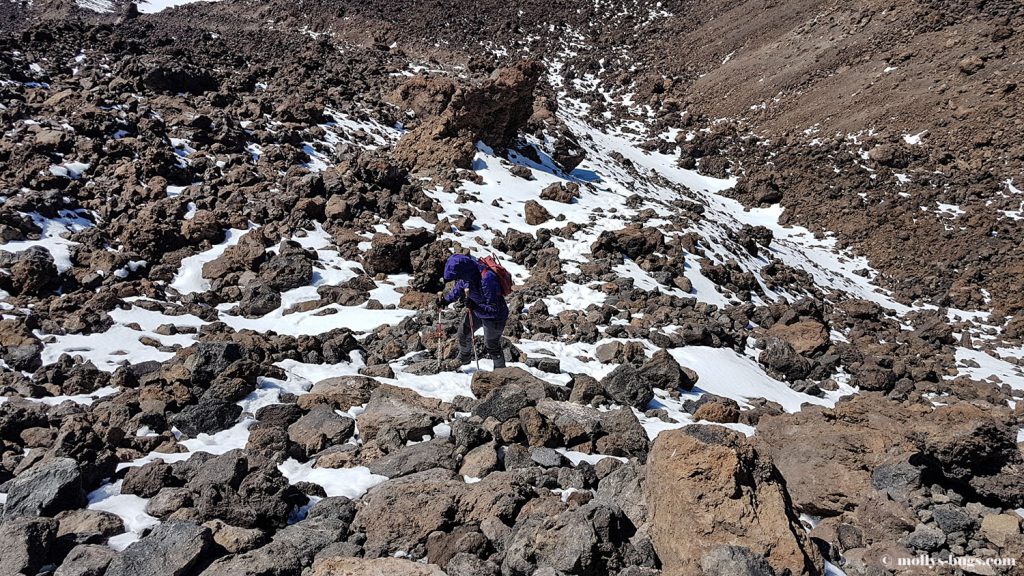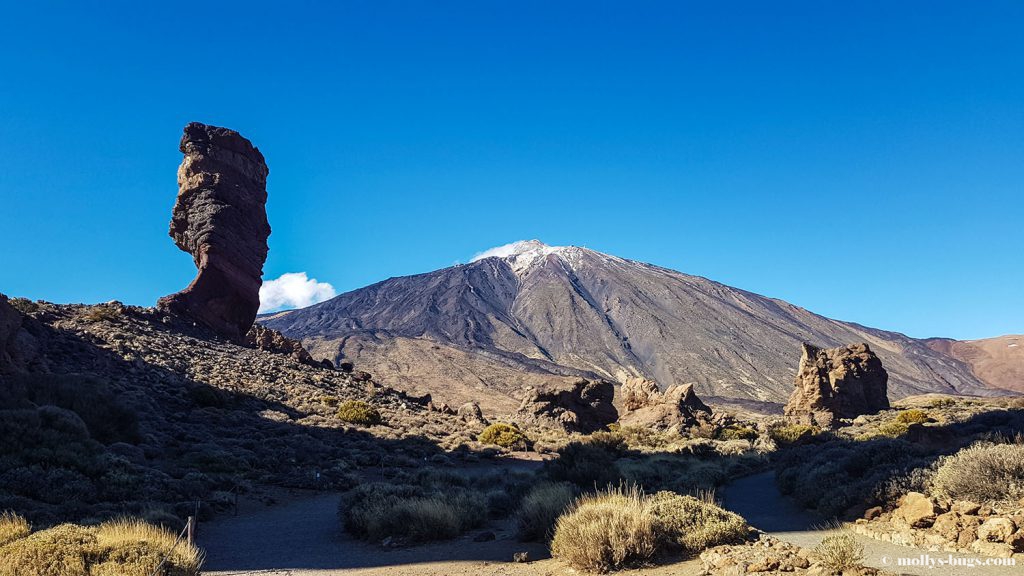To many people, the Canary Islands are all about the beaches, the sun, and relaxation. This is what numerous tourists every year come for. However, the prime calling card of the Islands is their “lord”, the Teide volcano, 3,718 meters high. It is situated almost in the middle of Tenerife, the archipelago’s largest island. With the goal of conquering its summit, we’ve come to this almost African land (the continental part of Morocco is but a stone’s throw away from here).
- The Teide National Park
- The Teide Volcano
- How to Ascend Teide
- How to Get to Teide’s Peak
- An Overnight Stay at the Altavista Refuge
- Who’s Prohibited from Ascending Teide
- Our Ascent of Teide
The Teide National Park
Teide is considered to be one of the three largest volcanic structures if measured from the ocean floor (7,500 meters high). It yields in size only to its Hawaiian cousins – Mauna Kea and Mauna Loa. The area of the park stretching at the foot of the giant volcano is about 190 square kilometres (almost 19 hectares). In 2007, the park was named a World Heritage Site by UNESCO. You can literally spend a week strolling around its furthermost parts. Forests, lava rivers, craters, and lunar landscapes are just some of the sights that await you here. No matter the season, the park always has many tourists. Teide’s greatness draws them like a magnet. Large tourist buses come here from all over the island, carrying people eager to see the volcano. Entrance to the National Park is free of charge. If you want to get a parking spot, especially in summer, it is best to come early. And be sure to take a break in the middle of the day and have lunch at one of the cafes with a view of Teide.
The Teide Volcano
The volcano itself is considered to be relatively young, it’s only 170 thousand years old. Interestingly enough, it wasn’t the first volcano on the island. There used to be a large ancient stratovolcano on Tenerife which collapsed after an eruption, extinguished forever. It formed a huge caldera (crater), Las Cañadas del Teide, 16 kilometres in diameter. The caldera was filled by the young volcano, with its peak now straight in the middle, 300 meters above the old crater.
How to Ascend Teide
There are two ways to get to the top:
– By using the ropeway that can quickly take you to the edge of the crater. No physical effort required, as long as you can bear the altitude difference. The only caveat is that the ropeway is often closed due to weather. Strong winds at the top make the rise very risky, so in any season there is a possibility that you won’t be able to go up there. I suggest that you check the state of the ropeway on the day of the trip on the Teide National Park website. Tickets for the ascent and the descent cost 13.5 euros each.
– On foot. There are several roads leading to the top of Teide on each side of the volcano. Their full list and lengths are also available on the National Park official website. It will take you until sunset to get up and down the volcano. You can also go up on foot and use the ropeway on the way down if you catch the last trip. If the ropeway’s working, that is.
How to Get to Teide’s Peak
The ropeway won’t take you to the very top of Teide. It will only get you to the highest point of the old stratovolcano that Teide was formed on top of. From there, it will take you another 300 meters to get to the peak. Few people do that, however, since it requires a special permit. It is issued free of charge. To get it, you need to fill out a form on the website. Enter your information, select the time of your visit, and print out the form. The time is strictly regulated: you have two hours to visit Teide’s peak. If you can’t make it on the chosen day or come late for whatever reason, you’ll have to get a new permit. These rules are heavily observed. Only 160 people are allowed per day. Keep in mind that you must make the reservation several months beforehand. For example, to ascend Teide in March, I signed up as early as November.
To get the permit, visit this site: https://www.reservasparquesnacionales.es/real/ParquesNac/usu/html/listado-actividades-oapn.aspx?cen=2
An Overnight Stay at the Altavista Refuge
If you want to meet the sunrise at Teide’s peak or enjoy the best view of the starry sky in the world, you can spend the night at the Altavista Refuge on the way to Montaña Blanca (track #7). It is situated at the height of 3,270 meters. The cost is 25 euros per person per night. During the busy season, it’s best to book your stay in advance.
Who’s Prohibited from Ascending Teide
– Children under 16 years.
– Pregnant women.
– People with heart diseases, impaired cardiac function, breathing issues, as well as high intracranial and blood pressure.
– People susceptible to altitude sickness.
Our Ascent of Teide
We arrived in March. Sadly, all the tracks were closed due to ice on the volcano’s peak. The ropeway was completely covered in ice as well.
So we decided to take a longer route from the eastern side of the mountain. We took the Roques de Garcia path (about 5.5 kilometres), and then took a turn for Mirador de Pico Viejo (2.1 kilometres).
This route is longer and harder than the one on the opposite side. The path is rocky and is therefore especially demanding in terms of physical form and endurance. We made the decision to go up despite the National Park’s employees’ warnings that ascending to the peak is prohibited due to the ice.
We started our ascent at sunrise, and it took quite a bit of effort, even though it was sunny and there was little wind in the first half of the day. We met about 10 other people along the way who were also going up, but not to the peak. All of them were just hiking and planning to return by lunchtime. We had to make frequent stops to catch our breath due to the steep and rocky climb. The Teide National Park looks even more fabulous and otherworldly from above. The snow that the park rangers told us about began at the height of 3000 meters. But it didn’t pose much of a threat just yet, so we had no trouble overcoming it. However, the snow, the ice, and the wind that was getting stronger after lunchtime slowed us down significantly as we approached the old Mirador de Pico Viejo caldera. It took us 7 hours total to get to the beginning of the crater at the top of Teide (at the height of 3520 meters). Going up another 300 meters was out of the question. With the ground heavily covered in ice, climbing up without grappling hooks would be very reckless, so we turned back. Of course, we wouldn’t have had any trouble going to the very peak if the weather was different, but nature sometimes dictates its own terms, unchallengeable without proper equipment.
Snow at the top of Teide is very rare overall, especially in the spring. There was a lot of snow in the winter, however, so the peak didn’t completely thaw yet. It took us 14 hours total to ascend and descend the mountain.
The climb was one of the longest and most challenging that we’ve done. Such experiences are unforgettable. We’ve really felt the imposing might of the volcano. If you like extreme travels as much as we do, I really recommend a trip on foot here. You’ll definitely have a great time!






























Leave a Reply